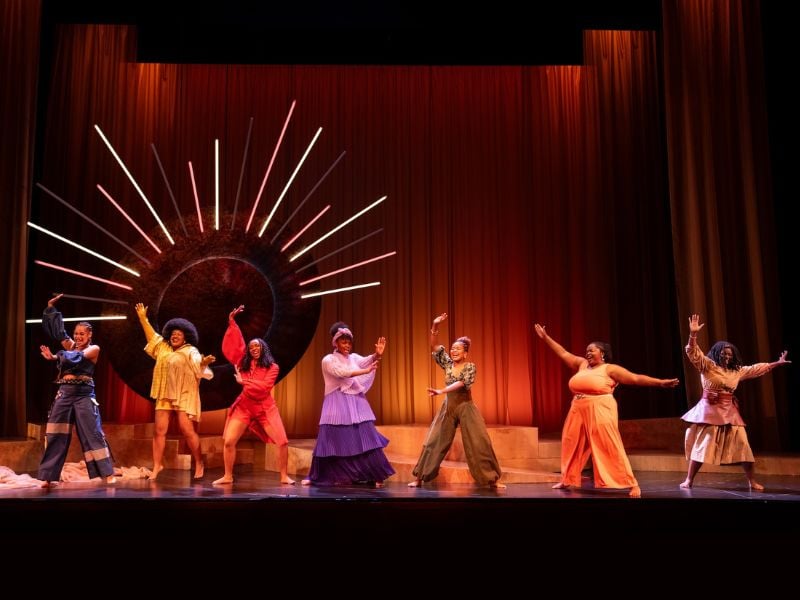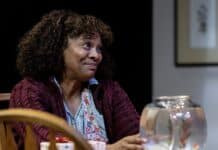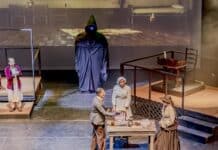Red, orange, yellow, brown, green, blue, and purple — what do all these colors have in common? They all have stories, sorrows, joys, and dances that need to be shared. Who would’ve thought that colors could express such emotion? The cast of for colored girls who have considered suicide/when the rainbow is enuf knew, and alongside their co-directors Fatima Quander and Ama Law, this production team brought to life the stories of colored women in a way that is both modern and timeless.
This revolutionary choreopoem by playwright Ntozake Shange tells the multilayered stories of African American women through its cast of nameless women who are identified only by their assigned colors; red, orange, yellow, brown, green, blue, and purple. The women’s stories are as interconnected as they are individualized and tackle subjects of rape, abandonment, domestic violence, and more. Powerful stories are intertwined with laughter and dance, and all 22 poems performed speak truth to the obstacles African American women may face through their lives.

The cast of this performance was phenomenal; they were engaging, balanced, and well-connected as an ensemble. It was clear that the actors really trusted each other and had taken the time to form real bonds. As much as they were an ensemble, each actor delivered a unique and personal performance. Kayley Childs dominated the stage during her monologues as the Lady in Red, Alaina (AJ) Jenkins range of emotional expression captivated audience members as the Lady in Brown, Elizabeth Enworom’s graceful movements and punchy attitude made her pop as the Lady in Orange, Medhanit (Medi) Desta was able to capture both the wonders and sorrows of youth as the Lady in Yellow, Nina-Abbie Omatsola spoke with the power of a monarch as the Lady in Purple, Toi Lyles stunned with elegant dancing and performance as the Lady in Green, and Kayla Harvey-Ali pierced hearts with the dignified pain of her words as the Lady in Blue. All the actors spoke their lines with a reverence and power that showed their respect and love for this piece.
An interesting element of this performance was announced in the pre-show message, where the audience was informed to silence their cellphones but not their voices. They were encouraged to cheer loudly, clap for lines that they related to, and dance with the actors when prompted. This added audience interaction breaking from the traditional etiquette of theatergoing worked highly in this show’s favor, as the audience and actors were given permission to feed off each other; when an actor said something that the audience loved, the audience immediately showed that love, which empowered the actors to continue forward with even more confidence. As the show went on, the energy in the room became more and more palpable, until it finally burst with a standing ovation.
Part of the beauty of this show was the balance of contrasting ideas and emotions — joy could turn into sadness in the blink of an eye (not unlike in real life), and the lighting of the show amplified this poignant theme of contrast. Lighting designer John Alexander and the entire lighting crew utilized many tools in their toolbox to create the different lighting moods of the show; from disco lights to stark spotlights to using colored lighting to indicate which actor was the focal speaker, the lighting design really added an extra ethereal element to the performance.
In this radical political world we find ourselves in, it is important to remember the stories of the people and communities that continue to shape our society. The joys and sufferings of marginalized groups are what will take us to the future and build us up. This performance of for colored girls who have considered suicide/when the rainbow is enuf exemplifies the importance of loudly and freely sharing our struggles and learning from mistakes so we can march forward to a better and brighter tomorrow, for ourselves and the generations to come.
Running Time: 90 minutes with no intermission.
for colored girls who have considered suicide/when the rainbow is enuf plays through February 28, 2025, presented by UMD School of Theatre, Dance, and Performance Studies performing in the Kay Theatre at The Clarice Smith Performing Arts Center, 8270 Alumni Drive, University of Maryland, College Park, MD. Purchase tickets ($25 regular, $10 for students and youth) online.
The program book can be downloaded here.



